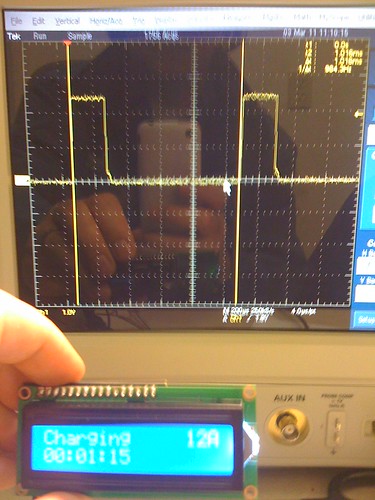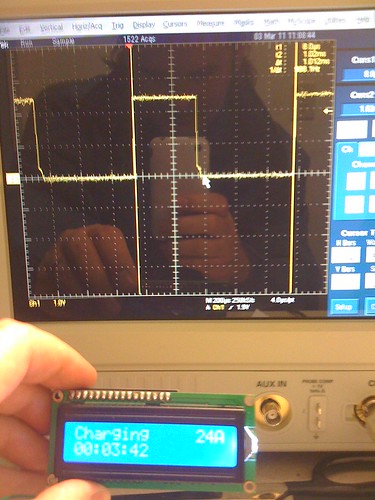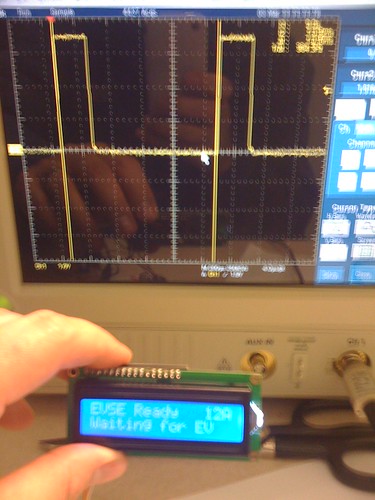chris1howell
Well-known member
This weekend I decided to see if I could build a control pilot based on the J1772 Spec. I am really frustrated with the current lack of good options. I received an outrageous quote from AV like most others here and I am not about to buy from them and have it installed.
My perfect EVSE would be:
Simple
Small (portable)
Inexpensive
It does not need any features other than those to keep it safe and make it work well. The cars can implement all the cool stuff.
So... I pulled together some parts I had on hand. An Atmel 328 Microcontroller an LCD screen some switches, resistors and a few other basic components.
I was able to generate the 1khz pilot signal and use a couple of switches to select higher/lower current settings by telling the micro controller to adjust the duty cycle of the pilot.
The Micro controller properly detects all the J1772 EV states by “Not Connected" 12V, "EV Connected" 9V, "EV Ready - Charging" 6V - "EV Ready - Ventilation required" 3V and pilot "Error" 0V.
I have not implemented the Negative 12V safety check and GFI detection because I did not have the required parts on hand.
I have posted a pretty bad video on youtube here: http://www.youtube.com/watch?feature=player_profilepage&v=4MfpxmG4zNE
Sorry for the quality, I was late for work but I wanted to get it posted.
My perfect EVSE would be:
Simple
Small (portable)
Inexpensive
It does not need any features other than those to keep it safe and make it work well. The cars can implement all the cool stuff.
So... I pulled together some parts I had on hand. An Atmel 328 Microcontroller an LCD screen some switches, resistors and a few other basic components.
I was able to generate the 1khz pilot signal and use a couple of switches to select higher/lower current settings by telling the micro controller to adjust the duty cycle of the pilot.
The Micro controller properly detects all the J1772 EV states by “Not Connected" 12V, "EV Connected" 9V, "EV Ready - Charging" 6V - "EV Ready - Ventilation required" 3V and pilot "Error" 0V.
I have not implemented the Negative 12V safety check and GFI detection because I did not have the required parts on hand.
I have posted a pretty bad video on youtube here: http://www.youtube.com/watch?feature=player_profilepage&v=4MfpxmG4zNE
Sorry for the quality, I was late for work but I wanted to get it posted.



